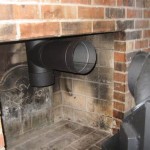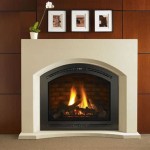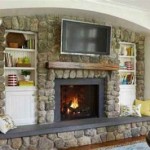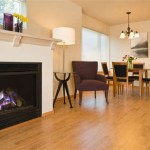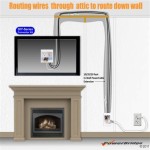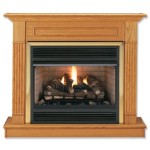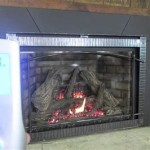Ventless Gas Fireplace Inserts: Comprehensive Guide
Ventless gas fireplace inserts provide a heating solution for homes without existing chimneys or the desire for extensive renovations. Unlike traditional wood-burning fireplaces or vented gas fireplaces, these units do not require a flue to exhaust combustion byproducts. This characteristic offers flexibility in installation and can potentially result in higher heating efficiency.
This article will explore the functionality, benefits, safety considerations, installation processes, maintenance requirements, and regulatory aspects of ventless gas fireplace inserts. Understanding these aspects is crucial for homeowners considering this heating appliance as an alternative or supplementary source of warmth.
Understanding the Functionality of Ventless Technology
The core principle behind ventless gas fireplace technology lies in its combustion process. These units are engineered to burn propane or natural gas with high efficiency, aiming for nearly complete combustion. This minimizes the creation of harmful byproducts such as carbon monoxide, nitrogen dioxide, and unburned hydrocarbons.
To achieve this near-complete combustion, ventless fireplaces incorporate oxygen depletion sensors (ODS). The ODS is a safety device that continuously monitors the oxygen levels in the surrounding room. If the oxygen level drops below a pre-determined threshold, indicating incomplete combustion and a potential buildup of pollutants, the ODS automatically shuts off the gas supply to the fireplace. This mechanism is crucial for mitigating the risk of carbon monoxide poisoning, which is a primary concern with unvented combustion appliances.
The technology relies on precise control of the air-to-fuel ratio during combustion. Manufacturers employ sophisticated burner designs and gas delivery systems to ensure optimal mixing of gas and air. Catalytic converters are sometimes incorporated to further reduce emissions. These converters typically contain a platinum or palladium catalyst that promotes the oxidation of carbon monoxide into carbon dioxide at lower temperatures, further improving combustion efficiency.
The heat generated by the combustion process is then radiated directly into the room. Some models incorporate blowers to enhance heat distribution and improve the overall heating effectiveness of the insert. The efficiency of a ventless gas fireplace is often measured by its Annual Fuel Utilization Efficiency (AFUE) rating. While ventless models can achieve high AFUE ratings compared to vented fireplaces, it's essential to consider the potential impact on indoor air quality.
While they don't require venting, it is vital to acknowledge that ventless fireplaces do release combustion byproducts into the living space. These byproducts include water vapor, carbon dioxide, and small amounts of other gases. Proper ventilation of the room where a ventless fireplace is installed is crucial to maintain acceptable indoor air quality.
Key Advantages of Ventless Gas Fireplace Inserts
Ventless gas fireplace inserts offer several potential advantages over traditional and vented gas fireplaces, making them an attractive option for many homeowners:
Installation Flexibility: The absence of a venting requirement significantly simplifies the installation process. Ventless inserts can be placed in rooms without existing chimneys or vent systems, expanding the possibilities for fireplace placement within the home. This eliminates the need for costly and disruptive chimney construction or modifications.
Heating Efficiency: Since the heat generated during combustion is not vented to the outside, ventless fireplaces can achieve higher heating efficiencies compared to vented models. This can translate into lower heating bills, especially in situations where supplemental heating is desired.
Aesthetic Appeal: Ventless gas fireplace inserts are available in a variety of styles and designs, allowing homeowners to select a unit that complements their existing décor. Many models feature realistic flame patterns and log sets, creating a visually appealing focal point in the room.
Convenience: Gas fireplaces, in general, offer convenience compared to wood-burning fireplaces. Ventless models further enhance this convenience by eliminating the need for wood storage, fire building, and ash removal. Operation is typically controlled by a thermostat or remote control, allowing for easy temperature adjustment.
Zonal Heating: Ventless gas fireplace inserts are well-suited for zonal heating, where specific areas of the home are heated as needed. This can be a more energy-efficient approach compared to heating the entire house, especially during periods of partial occupancy.
Safety Considerations and Regulatory Compliance
Despite their advantages, ventless gas fireplace inserts also present certain safety concerns that must be carefully addressed. These concerns primarily revolve around indoor air quality and the potential for carbon monoxide buildup.
Carbon Monoxide Monitoring: The installation of a working carbon monoxide detector is mandatory in any home where a ventless gas fireplace insert is used. The detector should be located in the immediate vicinity of the fireplace and tested regularly to ensure proper functionality. It is recommended to have multiple detectors on each level of the home.
Room Size Restrictions: Ventless fireplaces are typically rated for specific room sizes. Operating a unit in a room that is too small can lead to excessive humidity and pollutant buildup. Consult the manufacturer's recommendations and local building codes to determine the appropriate size fireplace for the intended space.
Ventilation Requirements: While these units are termed 'ventless', adequate ventilation is crucial. Opening a window or door slightly can provide sufficient fresh air to dilute combustion byproducts and maintain acceptable indoor air quality. Some building codes may mandate permanent ventilation openings for rooms containing ventless gas appliances.
Proper Installation: Installation should be performed by a qualified technician who is familiar with the manufacturer's instructions and local building codes. Improper installation can compromise the safety of the fireplace and potentially void the warranty. The technician should verify proper gas line connections, burner operation, and safety device functionality.
Regular Maintenance: Regular maintenance is essential to ensure the safe and efficient operation of a ventless gas fireplace. This includes cleaning the burner, inspecting the ODS, and checking for gas leaks. It is recommended to schedule annual inspections by a qualified technician.
Regulatory Compliance: Ventless gas fireplaces are subject to various regulations and safety standards. These standards often vary by jurisdiction. Before purchasing and installing a ventless fireplace, it is crucial to verify that the unit is certified by a recognized testing laboratory, such as CSA or UL, and that it complies with all applicable local building codes.
Restrictions and Bans: Some jurisdictions have restrictions or even outright bans on the use of ventless gas fireplaces due to concerns about indoor air quality. It is imperative to research local regulations before considering the purchase of a ventless fireplace insert.
It's important to recognize that while ventless fireplaces are designed to burn cleanly, they still release some level of pollutants into the home. Individuals with respiratory sensitivities, such as asthma or allergies, may experience adverse reactions to these pollutants. Careful consideration should be given to the potential impact on occupants with pre-existing health conditions.
The responsible use of ventless technology is crucial for minimizing risks and maximizing benefits. Adhering to manufacturer's instructions, prioritizing safety measures, and maintaining adequate ventilation are paramount for ensuring safe and comfortable operation.
Choosing to install a ventless gas fireplace insert requires careful consideration of the factors discussed above. Homeowners need to balance the convenience and cost-effectiveness of these units with the potential impact on indoor air quality and safety. Compliance with local regulations and adherence to safety guidelines are essential for ensuring the responsible and safe use of ventless gas fireplace inserts.
:max_bytes(150000):strip_icc()/ventless-gas-fireplaces-4160746-hero-f9d4bdcd9bd446eb84406de306f790ba.jpg?strip=all)
How To Pick Out A Ventless Gas Fireplace

Vent Free Inserts White Mountain Hearth

White Mountain Hearth By Empire Ventless Outdoor Traditional Premium Gas Fireplace 36

Small Fireplaces I Hearthcabinet Ventless

What Is A Ventless Gas Fireplace Experts In Gaithersbutg Md

Duluth Forge 26 000 Btu Dual Fuel Ventless Gas Fireplace Insert With Remote Com

Vent Free Inserts White Mountain Hearth

Procom Universal Ventless Firebox 170016 The Home Depot

Considering A Ventless Gas Fireplace Here S What You Need To Know Bob Vila

Gas Fireplaces Inserts And Stoves N Fixin S
Related Posts

